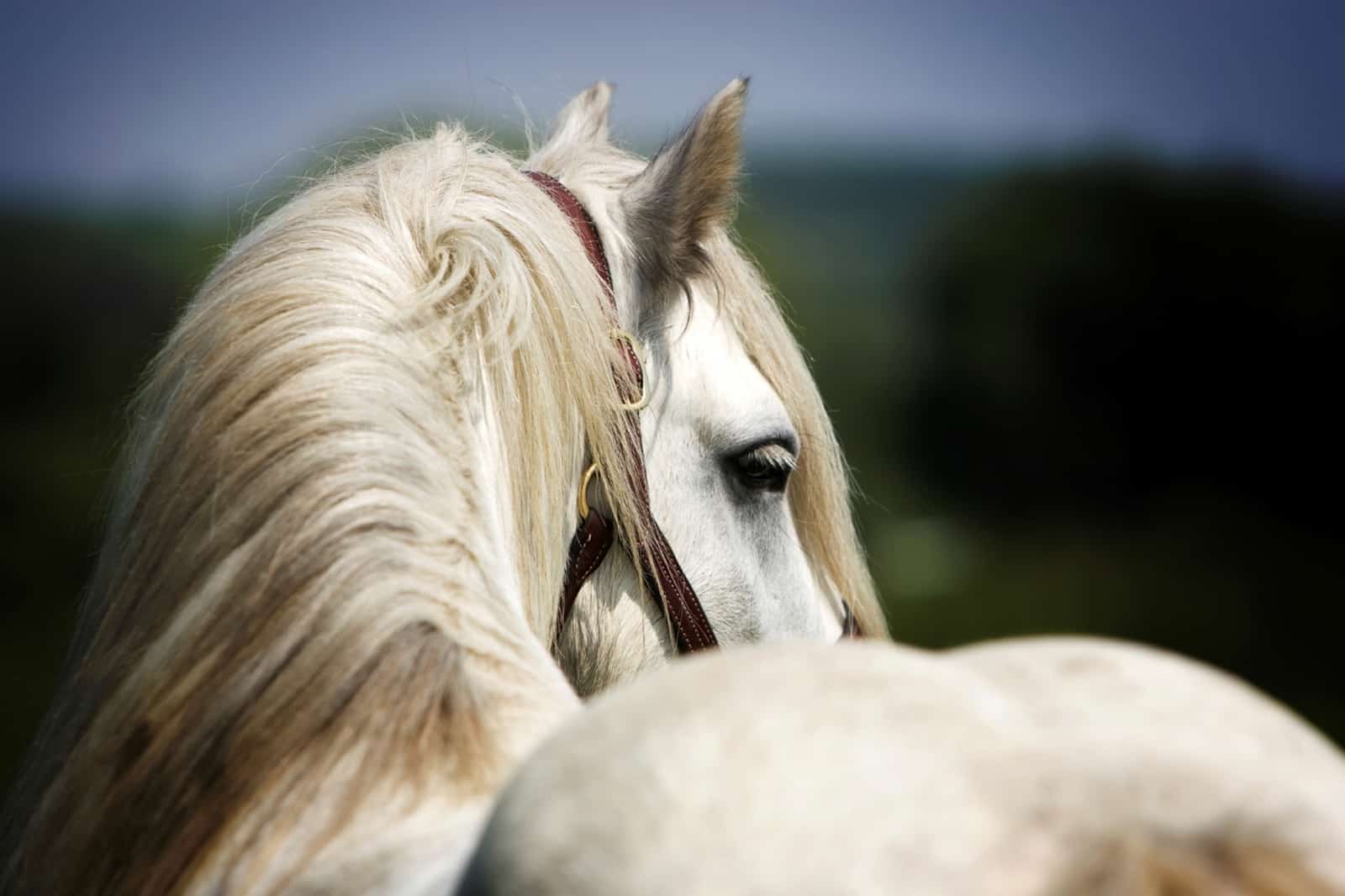Feeding the Horse’s Topline

We score a horse’s physical shape on a 1-9 scale, based on how much flesh is covering their ribs, withers, buttocks, etc. But researchers have begun to evaluate another area of the body—the topline—to complement the body condition score (BCS) and to help with evaluation of muscle condition.
Two things cover the topline: Fat and/or muscle. Most horses must reach a BCS score of 7 before their bodies lay fat along the topline. In contrast, in horses with BCS scores of less than 7, muscle development of the withers, back, loins, croup, and hindquarters makes up the visible topline. Often, a horse shows signs of reduced performance before visible topline changes. Note that a horse can have an ideal BCS, but deficient topline muscles.
Russell Mueller, MS, PAS, and Kelly Graber, BSC, PAS, both from Cargill Animal Nutrition, in Minneapolis, described nutrition as it relates to topline muscle development in a session at the 2015 American Association of Equine Practitioners Convention, held Dec. 5-9 in Las Vegas. “Nutrition is the science of prevention, and proactive nutritional support and wellness programs can go a long way toward maximizing a horse’s performance,” said Mueller.
The topline grading system developed by Progressive Nutrition is as follows:
- Grade A—The ideal topline; according to the grading system, “The back, loin and croup are full and well rounded. The topline muscles are well developed and blend smoothly into his ribs. The horse should be able to perform work requiring the use of all of these muscles.”
- Grade B—The topline is sunken in the back area between the vertebrae, and concave at the top of the ribs.
- Grade C—The topline is sunken in both the back and loin areas.
- Grade D—The topline is sunken in the back, loins, and croup.
Atrophy (wasting) of topline muscles begins in the withers, then continues to the back and gradually extends through the loins and croup and down into the hip and stifle. Rebuilding muscle occurs in the reverse order. Mueller stressed that exercise activates muscle conditioning processes while nutrition provides its building blocks in the form of amino acids, which make up protein. After all water is removed, muscle is comprised of 73% protein and 22% fat.
To build the strong muscle needed to improve topline, a horse needs all 10 essential amino acids (which the horse’s own body can’t produce; he must acquire them through his feed) in his diet:
- Lysine, for young horse growth (this is the first “limiting” amino acid—more on this in a moment);
- Threonine, for older horse repair and maturation;
- Methionine, for hoof and hair growth;
- Valine, leucine, and isoleucine, which are branch-chain amino acids important for muscle recovery;
- Phenylalanine, a building block for proteins as well as being a precursor to neurotransmitters;
- Tryptophan, a building block for proteins as well as being a precursor to neurotransmitters; and
- Arginine and histidine, which are used in protein biosynthesis.
The rate of muscle protein synthesis is fastest during growth, and synthesis rates decline as the animal ages. If there is an inadequate amount of any of these essential amino acids in a horse’s diet, protein synthesis will only occur to the level of the limiting amino acid. For example, if a diet contains 125% (of what the horse needs in) lysine, 110% methionine, 101% threonine, and 80% tryptophan, then the horse will synthesize all the amino acids into protein at 80% of its potential.
For example, to meet a horse’s daily lysine requirements—the first limiting amino acid—you would need to feed 34 pounds of corn, 15-32 pounds of grass hay, 2.2 pounds of soybean meal, or one pound of whey protein. Percentage of protein on a feed tag does not give the full picture because it doesn’t break down the individual amino acid content on the label. It is also important to look at practical consumption rates as well as exercise level–intense training doubles a horse’s protein needs from “maintenance” requirements. Graber noted that forage is not just filler, but a high-quality food product that provides protein.
“While exercise will condition muscle, it does not make muscle,” said Graber. Rather, muscle production and repair require the essential amino acids as well as the nutrients the horse uses while working. She stressed that a well-balanced diet includes added amino acids for muscle support, and it’s best to provide the horse with amino acids within 45 minutes after exercise—and after the horse is properly cooled down—to ensure fast recovery and optimal effects.
“Research adapted from humans shows that the system is set up to absorb and utilize amino acids at a higher rate within a 45 minutes window following exercise,” Mueller explained. “If we can get a concentrated source of high quality amino acids into the horse during this period we can replicate improved recovery and reduced muscle breakdown like we see in humans consuming a product like Muscle Milk after exercise.”
In one study, researchers demonstrated that a person on a strict carbohydrate-only diet breaks down more muscle compared to a carb-heavy diet, Mueller said. Adding amino acids to the carbohydrates reduces muscle breakdown and results in a high level of muscle synthesis. Adding branch-chain amino acids enhances these positive effects even further.
Electrolytes are another dietary supplement that can help with muscle recovery from exercise, providing benefit within 30-40 minutes, especially when offered with a small amount of sugar, such as what is found in some electrolyte preparations and/or in a small amount of sweet feed. In previous studies researchers (Ecker et al) have demonstrated that electrolytes can delay the onset of fatigue by more than 22% and that they reduce recovery time from 12 hours to 45 minutes.
Take-Home Message
Muscle development along a horse’s topline is a useful evaluation tool to determine condition and strength. With periodic assessment of muscle mass along the topline as well as attention to nutrient balance in your horse’s diet in conjunction with exercise, you can maximize your horse’s muscle development. Make sure your horse is consuming enough essential amino acid building blocks for muscle so that he can develop a healthy topline and perform to his genetic potential.

Written by:
Nancy S. Loving, DVM
Related Articles
Stay on top of the most recent Horse Health news with















